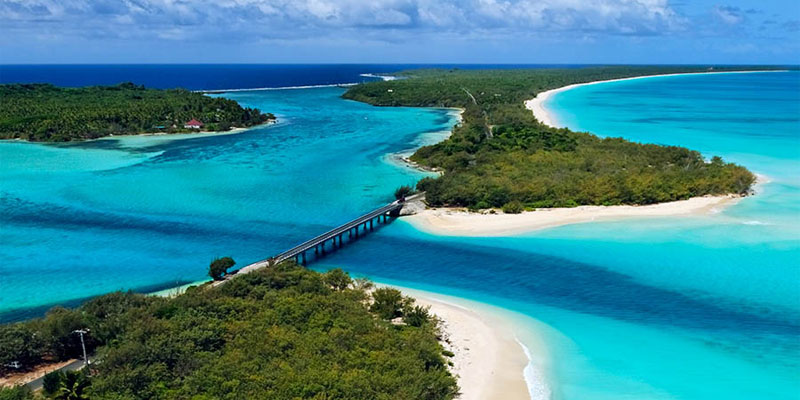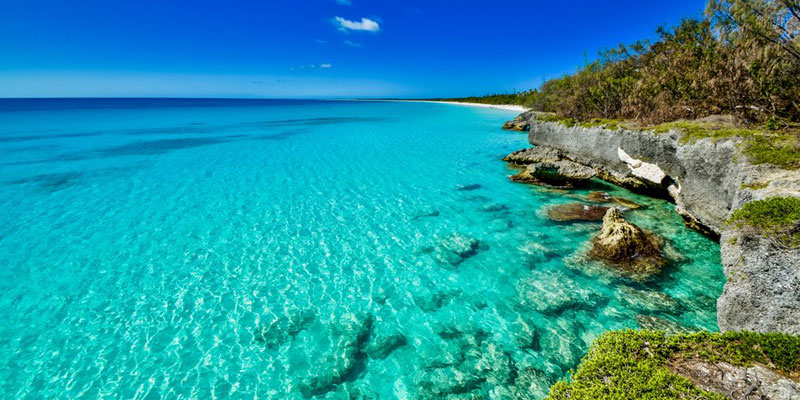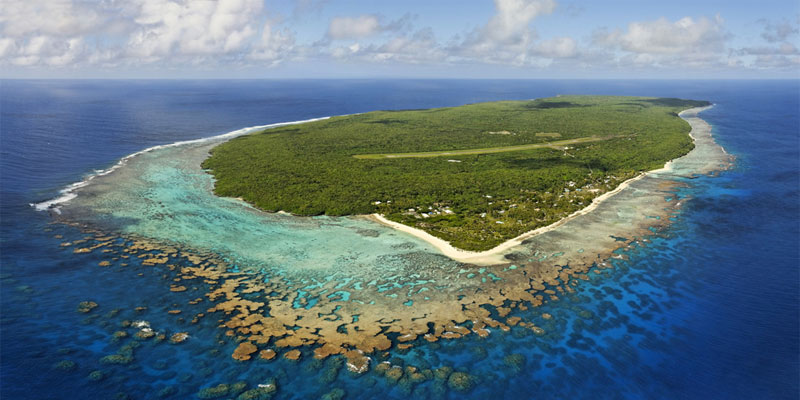
Covering around 7172 square miles of area, the New Caledonia archipelago is rich in some of the elusive and endemic plant and animal species, thanks to its variegated and multi-colored terrains, unconventional soil conditions and the distinct microclimates. Often dubbed as the “biodiversity hotspot”, the paleo ecological and biological diversity is evident in the edaphic and topographical regions having tropical and oceanic climate. The dominance of the mountain region in mainland, the rugged high coastline to the east stretching to lagoon and the low plains on the west has their distinct flora and fauna. Coral atolls and coastal plains at the Isle of Pines and flat coral reefs of the Loyalty Islands too have their own ecosystem, making this French territory acknowledged as UNESCO World Heritage (2008).
Diversity In Ecosystems
Over 3380 indigenous flora thrives here of which over 80% are deemed as endemic. The main biodiversity of New Caledonia is evident in the main island Grande Terre which is separated by the mountain range. Thanks to the rain-shadow area of the mountains, the western slopes have dry weather condition while the eastern slopes have moist and humid conditions.
Among the main eco-regions, Rainforest in the greater Loyalty Islands, Isle of Pines on eastern slope and dry forest along non-fragmentary west coast are significant. The characteristic marine environment in Barrier Coral Reef, humid lowland and low scrubland of Yate Lake and Mt. Ignambi and the Maquis in southern coasts are the distinct ecoregions of New Caledonia.

Evergreen Rainforest –The humid laurel forest consists of conifers, epiphytes, angiosperms and ferns.
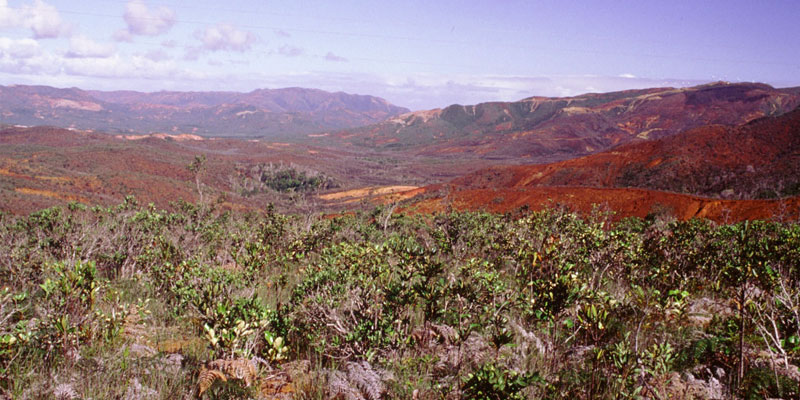
Shrubland Maquis –Araucarias, Dwarf Kauri, Pycnandra acuminate are some of the predominant plants in the Maquis.

Dry Sclerophyllous Forests –Although near threatened, the Savannah grasslands, woody vines, shrubs, Acacia and niaouli trees are common.

Halophytic Mangrove Vegetation –Around 80% of coastline has mangrove vegetation.

Wetlands –Found mostly in Plaine des Lacs, here grows the rare conifers like Podocarpus species.
Significant Flora Species Of New Caledonia
From the humid lowland forests of Melaleuca to Erythrinas in the low shrublands, the flora species in New Caledonia varies from places to places. Among 196 plant families available in the entire region, the five endemic families are –

Strasburgiaceae

Amborellaceae

Papracrypyiaceae
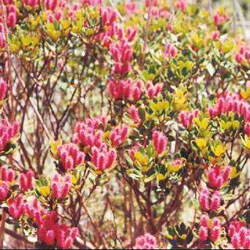
Oncothecaceae

Phellinaceae
Around 14% genera and 79.5% species are deemed endemic. Some of the trees and flowering plant species are mentioned below –
- There are 13 araucarias species in New Caledonia and among them the Araucaria columnaris or Cook Pines (Pin Colonnaire) are quite symbolic on the southern shores of Isle of Pines and the Aracuria rulei is distinctive for growing on higher elevation ulotrabasic grounds.
- Among 43 endemic Gymnosperms, the parasitic Falcatifolium taxoides is unique and rare in the world.
- 5 species of Gondwana Beech Tree grows here, making Caledonia listed among the only five regions in the world where the plant still thrives.
- Among 37 endemic Palm tree species, the near-extinct Pritchardiopsis jennerncyi is notable along with Burretokentia vieillardii, the trunk of which spreads over 10 meters.
- Among the tallest fern trees available in the world, Caledonia has Cyathea intermedia which grows up to 30 meter tall.
- The Niaouli growing at the savanna region is famous for its adaptive quality in even the harshest weather conditions.
- Among the flowering plants, the Dracophyllum and Guaiac grows on ultrabasic rocks. Guaiac is known for the characteristic mimosa-like smell. Deplanchea sessilifolia and Grevillea gillivrayi are also notable for the exquisite-looking vibrant flowers.
From Gymnosperms in the acidic soils of the rainforests to the bamboo genus of Greslania in southern region having iron-rich soil, the diversity is truly incredible.
Fauna Species Of New Caledonia
The Great Barrier Reef of New Caledonia , which is the 2nd largest reef in the world, has a rich coral reef vegetation surrounding the lagoons, creating various atolls, islands, barrier reefs, patch reefs and so on.
Among the significant marine fauna, the following are remarkable –

The endangered Dugongs

Green Sea Turtle (that nests in the lagoons)

Sponges like Tetractinellideae and Lithistideae, which are living fossils

Endemic Mollusc species like Nautilus macromphalus with external shell

Volutomitridae is found in highest biodiversity in the world
The freshwater sponges, mollusks, annelid worms, arachnids, mygales and scorpions along with decapods crustaceans are found in the freshwater lakes and rivers.
Among the reptile species, the snakes like Banded Sea Kraits, 67 species of Geckos (Rhacodactylus leachianus –the largest in the world and Rhacodactylus ciliatus) and Giant Monitor Lizards along with giant skinks are seen.
Among the 80 fish species too, diversity is evident –
- IUCN red-listed Glaxias neocaledonicus is found in the creeks, rivers and lakes in the southern region
- Tilapias and Guppies are found in the brackish waters in mangroves and estuaries
- Macrobrachium – Creeks shrimp is also a threatened species in rivers and shrimps
Among the commonly found insects, Yellow Wasps, Periplaneta and Blatella Cockroaches, Fire Ant, Scolopendra centipede, Giant Coconut Grasshopper, Kanakia typical cicada, Caledopteryx maculate damselfly, Longhorned Beetle, Leafcutting Bee and Phasmid species of Gigantophasma is notable. The butterfly species like Montrouzier Swallowtail and Sphinx Moth is also found in abundance.
The Cagou, emblem or national bird of New Caledonia is the endangered non-flying bird found in the rainforest and is under conservational project. The enormous tree-dwelling Notou, a member of IUCN red-list, Green Pigeon and the Parakeet species like Uvea Parakeets and New Caledonian Parakeets are the endemic and critically endangered rainforest bird species. The mainland is abundant with New Caledonian Crow, Common Myna, Peregrine Falcon, Sparrow hawk and Red-throated Parrot finch. The IUCN endangered Australasian Bittern, New Caledonian Rail and New Caledonian Owlet-Nightjar are found near the water bodies. Some of the endemic bird species of New Caledonia are White-bellied Goshawk, Red-bellied Fruit-dove, Long-tailed Triller, Streaked Fantail, Cardinal Myzomela, Striated Starling and Dark-brown Honeyeater are noteworthy here.
The biodiversity of the flora and fauna in the marine, aquatic and terrestrial habitats have made New Caledonia one of the globally recognized biodiversity hotspot. As most of the species is either endemic or endangered, proper regulations and conservational efforts are being observed.
About Us

As a group of like-minded people determined to make New Caledonia a safe abode for its diverse flora and fauna while garnering its reputation as a popular tourist spot, we are here to help you. The archipelago with its mountainous regions, maquis, rainforests, grasslands, coastlines, beaches, lagoons and coral atolls has been home to over thousand birds, insects, animals, invertebrates and more.










